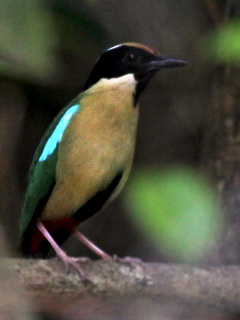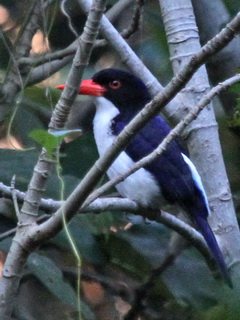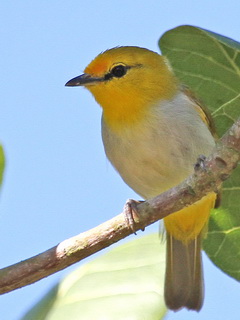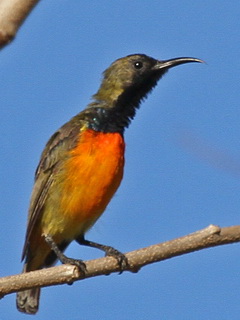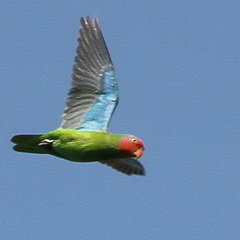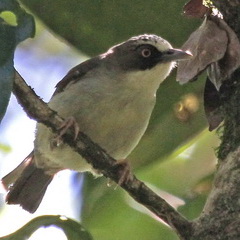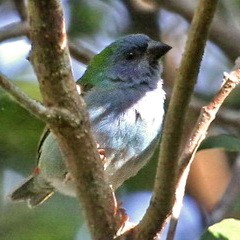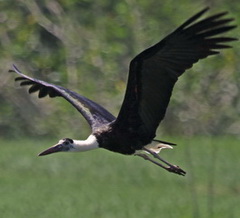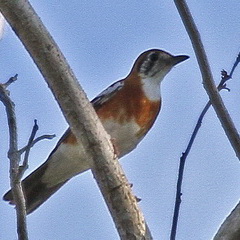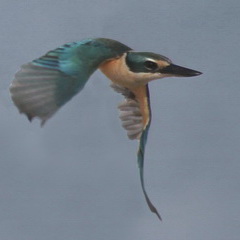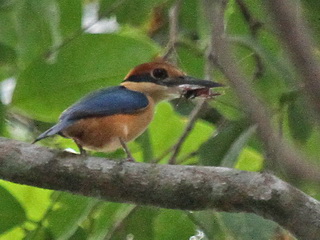Indonesia; The Lesser Sundas
Flores, Komodo, Timor and Sumba
Tour leader; Stijn De Win
20 July - 06 August 20..? ; Places available Group size ; max. 6
This Indonesia tour explores the islands strung out to the east of the popular holiday island of Bali. Our Lesser Sundas tour represents an enjoyable and exhilarating adventure for those who want to see the many exciting endemics and little-known avian specialities of these scenic islands. We offer a comprehensive coverage visiting the main islands Flores, Komodo, Timor and Sumba which are home to a remarkable number of Indonesia’s rarest and least known bird species. Prepare for quality birds as the list of top-species is long; Elegant Pitta, Yellow-crested Cockatoo, Sumba Hornbill, White-rumped and Cinnamon-banded Kingfishers, Flores Monach, Orange-banded Thrush, Timor Sparrow, Timor Black Pigeon, Black-banded Fruit-Dove, Bare-throated Whistler, Flores Crow, Olive-shouldered Parrot and Tricoloured Parrotfinch are just a few to start with. Besides fantastic scenery, good food and pleasant company, sits also high on the agenda a beast of menace, the aptly named 3 meter Komodo Dragon.
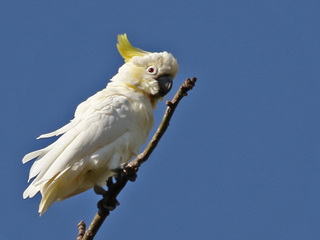
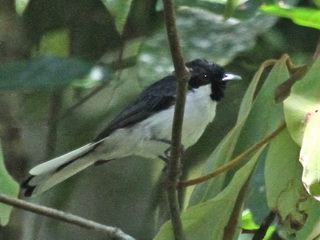
Yellow-crested CockatooFlores Monarch
The Lesser Sundas have not usually been regarded as a priority destination for birding in Asia. No wonder it took us until 2013 for a first visit, at last drawn by some excellent recent trip reports from independent birders. It was an eye opener. Those are fantastic welcoming islands with great birds and scenery while at the same time travel can be comfortable and safe. Any journey would be super enjoyable and rewarding if the right strategy for a trip has been adapted. With our tour we would like to offer a fresh start and prove the Lesser Sundas are not just a hardcore birding destination. We certainly plan to put in some keen birding although we do understand that the often rushed and sometimes frantic pace of some existing itineraries may leave the participants exhausted in the end and perhaps frustrated over the one that got away! The Lesser Sundas is in need of a tour where a more leisurely approach can blend in perfectly with finding the best birds. Thanks to good knowledge of all the birding sites and target species we should be able to do just that. We’ll be busy finding love and appreciation for the unique birdlife rather than numbers for a list and aim to offer an extraordinary adventure that can be truly enjoyed as we would allow for sufficient rest and comforts during unproductive times of day for birding. This doesn’t mean the bird list won’t be long in the end as we plan on going hard during those brief windows of opportunity that birding days always have on offer!
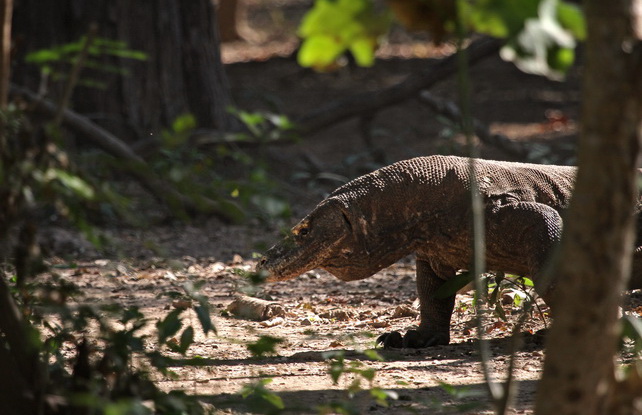
A Komodo Dragon crossing our way as he patrols his island forest.
Forest birding on Flores, Komodo, Timor and Sumba often is a little easier than it may be in the tall and dense tropical rainforests found in many parts of Asia. While the mountains on Flores certainly have some luxuriant cloudforest, the lower elevations mostly support much drier and more open forest habitats where birding may go well during the good morning hours and feel like a series of delightful discoveries for all the enjoy. This together with some easy open country birding, shorebirds and wetlands can make these islands a pleasant destination and a perfect match indeed even for those going on a first birding trip in Asia. Easy access and being only a short hop away from tourist and transport hub Bali is another advantage. Popularity is already increasing and we are keen to help open up the place to more birders.

"Beach resort" in Lubuan Bajo on Flores comes with Beach Thick-knees!!!
Day 1
International arrivals into Denpasar airport on Bali. Dinner
and night in our nearby hotel in Kuta.
Day 2
A morning flight will take us to Lubuan Bajo on the west
coast of Flores, where a short drive will take us to our
beach resort which will serve as an extremely comfortable
base for exploring the surroundings, nearby forest and
adjacent Komodo island. We should not forget to mention the
beach and resort grounds here aren’t so much about
sunbathing instead have some excellent birds on offer. A
walk on the beach may come with Beach Thick-knees,
Great-billed Heron, some waders and we found some unexpected
wintering Australian Pelicans on our 2013 trip as well. The
resort grounds and immediate surroundings are interesting as
well and may produce a decent list of good birds; Mees’s
Nightjar, Yellow-spectacled White-eye, Zebra Finch,
Stork-billed Kingfisher, Flame-breasted Sunbird, Sacred
Kingfisher…
In the afternoon we head to the mountains and visit the
forest at Puarlolo. The Flores Monarch is our main target as
it is restricted to submontane forest in West Flores and
Puarlolo may well be the only easy accessible site for it.
Russet-capped Tesia, Tick-billed Heleia, Crested Dark-eyes
and Golden Whistler are other birds to look out for and with
luck we may even chance upon a Chestnut-capped Thrush or
Rufous-chested Flycatcher.
Day 3
Anyone looking for an awe-inspiring experience should try a
day visit to Komodo National Park. We start with an
exhilarating speed-boat ride passing by several other
smaller islands offering a backdrop of craggy peaks in an
arid and inhospitable landscape. A few seabirds are possible
enroute and we enjoyed watching Lesser Frigatebirds and
Indo-Pacific Bottlenose Dolphins on our 2013 trip.
Once landed on the island it’s a matter of finding both the
beauty and the beast. It shouldn’t be that hard as good
numbers of the endangered Yellow-crested Cockatoo have a
last stronghold on Komodo island. I don’t need to mention
the Komodo Dragon will do its best to show us the beastly
side of the coin. There’re definitely some other sights to
be found in between the two extremes; Green Junglefowl, Grey
Tit, Island Collared Dove, Orange-footed Scrubfowl, Helmeted
Friarbird and Lemon-bellied White-eye are a few of those.
There will be time for snorkeling at a stop on the return
journey and we may make it back in time to enjoy one of
those fabulous sunsets as watched from the beach at our
accommodation.
Day 4
We’ll head back to Puarlolo this morning. After our first
afternoon venture here it will be nice to pick up the bird
activity in the cool morning hours this time.
We’ll have lunch back in the beach resort and there will be
some time to relax or explore the surroundings and the beach
in the early afternoon.
When things get a little cooler again we head for some good
roadside birding at Potawangka road. The forest here is
famous as a site for the scarce Wallace’s Hanging Parrot but
has a lot more on offer. Elegant Pitta, White-rumped
Kingfisher and Flores Crow are some top-species we recorded
here on our last visit. Great-billed Parrot is another
excellent possibility. At dusk we will have a good chance of
finding Mees’s Nightjar and Moluccan Scops-Owl. It’s then
only half an hour drive back to our resort so we’ll be ready
in no time for another dinner in a tranquil setting by the
beach.
Day 5
We must bird Potowangka during the good morning hours as
well after which we’ll have a last lunch in Lubuan Bajo. We
then leave this part of Flores and head inland for 4 hours
to the next pleasant base in the central mountains. The
journey is full of fabulous scenery and surprises abound. A
Wooly-necked Stork was certainly unexpected on our last trip
and we had the luck to watch a Short-toed Snake-Eagle take
off with a fresh catch.
Idyllic rice terraces make for another good stop and
photo-opportunity while we learned that the vanilla we love
so much in our ice-cream is actually grown in these
mountains. We will spend the next 4 nights in Ruteng,
situated nice and cool in the Flores highlands.
Day 6
An early start will see us birding the lowland forest at
Kisol first. This site holds some similar species than at
Potowangka but we’ll get a few new ones and we should look
out for a couple specialities like Flores Hawk-Eagle.
The forest at Kisol is small and rather degraded and
afternoon birding can get desperately slow. Many tour
itineraries spend 2 nights in very basic accommodation near
Kisol but we smartly opt for a daytrip only where we can
even visit Lake Ranamese on the return journey to Ruteng.
After all we’ve got many Kisol-species already in the bag in
a most comfortable way from the sites near Lubuan Bajo.
Day 7
Poco Ranaka is an active volcano with some excellent forest
on its flanks. A narrow and disused but sealed road winds up
through some good forest and provides with good birding and
nice views on the valley below. Black-banded Fruit-Dove is
common here and we’ll be looking for other specialities that
favour the sub-montane habitat. A surprise or two is always
possible and both Sunda Cuckoo and Bonelli’s Eagle where
good finds on our morning here in 2013.
Day 8
The incredible dawn chorus of Bare-throated Whistlers on the
mountain pass of Golo Lusang always is a highlight on
Flores. You’ll be listening to one of the best songbirds of
Asia in the crisp morning air. These birds are good looking
as well and on top of that they are endemic to Sumbawa and
Flores and only found on the higher elevations. We’ll have
here a top-contender for bird of the trip and a super
memorable experience indeed.
In the afternoon we visit Lake Ranamese once again in search
for any birds we may still have on the wish list.
Day 9
We take a morning flight from Ruteng to Kupang on Timor this
morning. In clear weather this means volcano viewing from
the air at least for those sitting on the left side of the
plane.
After arrival we will first settle in our comfortable hotel
in this modern city and have an early lunch before we go to
Bipolo which is a remnant patch of tall monsoon forest about
an hour’s drive away. Timor holds the largest number of
endemics on this tour and our first venture out should
easily produce a huge set of new birds. Timor Sparrow was my
first bird seen here on our 2013 trip. Cinnamon-banded
Kingfisher, Timor Blue Flycatcher, Timor Figbird,
Orange-banded Thrush, Red-cheeked Parrot, Timor Oriole, 3
species of Honeyeater, Red-chested Flowerpecker… the list is
long.
Day 10
We visit Bipolo again this morning before moving on to
Oelnasi. The dry forest in the hills here is a good site for
Timor Black Pigeon, Timor Stubtail, Timor Chat, Buff-banded
Ticket-warbler, Broad-billed Flycatcher and Bar-necked
Cuckoo-Dove. From Oelnasi forest its only 15 km to the town
of Soe where we spend the night.
Day 11
A day trip to Gunung Mutis, West-Timor’s highest mountain is
on the agenda. Specialities found here include Timor
Imperial Pigeon, Timor Wren-Babbler, Lesser Shortwing, Iris
Lorikeet, Blood-breasted Flowerpecker, Metallic Pigeon,
Island Thrush, Timor Leaf-warbler… Night in Soe.
Day 12
We’ll try Oelnasi forest in the morning this time and see
what else we can find. After lunch we visit yet another area
with good forest enroute back to Kupang, named Camplong. It
may serve as the perfect back-up site for a few of the more
difficult target birds. Night in Kupang.
Day 13
We could give Camplong a try in the morning or visit Bipolo
again first as today will be flexible so we can pull our
best cards for any bird species still wished for although we
may just as well choose to do some pleasant relaxed birding
and return to the site we liked the most. Night in Kupang.
Day 14
Each island on this tour has its own distinctive character
and this morning we fly to Sumba for yet another set of new
impressions to enjoy. Our last destination may well hold a
grand finale with some excellent birds and good birding to
go.
The start of our program on Sumba will depend a bit on the
arrival time of the not always reliable flights between the
2 islands. We may head straight for the forests near Lewa
inclusive the excellent Manupeu Tanadaru National Park or
first have a look at some sites near Waingapu. Both the
grasslands of Yumbu and the permanent freshwater wetlands of
Kadumbul aren’t far from Sumba’s capital city and should be
good for some introductory birding.
Day 15, 16 and 17
Full days birding near Lewa where the remnant forest holds
many of the Sumba endemics. Red-naped Fruit-Dove, Marigold
Lorikeet, Sumba Jungle-Flycatcher, Blood-breasted
Flowerpecker, Apricot-breasted Sunbird, Lesser Wallacean
Drongo, Chestnut-backed Thrush, Elegant Pitta, Variable
Goshawk, Black-naped Fruit-Dove, Australian Koel, Sumba
Myzomela, Red-cheeked Parrot, Great-billed Parrot, Rainbow
Bee-eater, Little Sumba Boobook and Sumba Hawk-Owl are some
of the goodies to look for. We will also visit the viewpoint
at Watumbelar to look for the Citron-crested Cockatoo and
Sumba Hornbill.
Day 18
Having returned to Waingapu the previous evening we will
have some time this morning to further explore the nearby
grasslands and wetlands and if the tide is right we could
choose the mudflats as well. It will then be time for our
return flight to Bali which marks the end of the tour.
Note;
Short extensions for birding on Bali would be possible at
both ends of this tour. This could be a 1 to 3 day excursion
to Bali Barat National Park or for those with only a few
hours to spare some sites near Kuta-Denpasar can be visited.
Some mudflats for waders are nearby at Benoa Harbour and
Nusa Dua Sewage Treatment Lagoons is a good place to see
some waterbirds. Uluwatu temple area may produce
Black-winged Starling and White-tailed Tropicbird is present
at the dramatic seaside cliffs.
Tour code;
Mostly easy walks at the usual slow pace good for birding
-- photographic opportunities are worthwhile --
weather usually hot and dry in the lowlands with very
pleasant temperatures in the mountains -- we’ll have
air-conditioned transport and the roads are in a fair
condition although often very windy -- early starts
are best for bird watching and we’ll have the odd late
return for some owling , however we’ll balance this out and
there will be sufficient rest overnight and during the hot
hours of the day -- we have found the food to be
both tasty and safe with no stomach problems encountered
during our last trip.
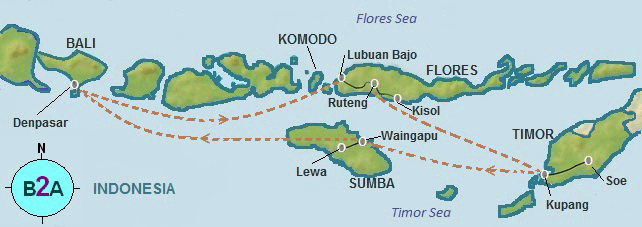
View our Lesser Sundas photo gallery. (2013 trip photos)
View our Lesser Sundas tour report and bird list. (2015 Jul-Aug tour)
View our Lesser Sundas tour bird list. (2015 September tour)

